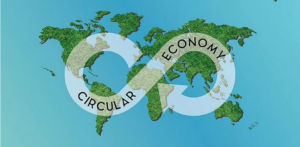Walt Disney. Jeff Bezos. Henry Ford. What did the three first-generation entrepreneurs, from diverse backgrounds and industries, have in common? In my opinion, it would be the guiding elements of passion, tenacity, and a sense of purpose that have defined scores of entrepreneurs over the decades. However, change is the only constant.
The world has changed, and how! Today, markets are flooded with new and innovative products and services almost every year, driven by technological advancements, sustainability, and social impact. Take the case of smartphones and the app economy for example. Together, they have democratised services like edtech, fintech, and healthtech among billions of people, beyond the privileged few.
As new economies grow in strengths globally, the world needs leaders who can marshal these high-growth industries to their prime and peak, without falling prey to the Achilles heel of burning out.
Here are some fundamental principles for aspiring founders and leaders to thrive in the new economy.
Place your bets on the product
As markets have evolved, so have customers. They have very little patience for faulty, below-par products that create problems, rather than simplify life.
Every product must meet at the intersection of the right price point and satisfying consumer needs. And if those simple criteria are not met, it does not take long for users to pass the verdict and exercise their veto power.
Just rewind a decade, and you will see the landscape of products littered with failed experiments. Poor development, expensive pricing, lack of infrastructure, and wrong marketing have often played culprits, nipping the wings before they truly take flight.
So, understand your consumer, assess your technical competencies, develop, and expand on your capabilities, and lastly, don’t sacrifice quality at the altar of gaining scale.
Master great value at a fabulous price
As Warren Buffet famously said, “Price is what you pay. Value is what you get”.
Whether it’s an entry-level product aimed at the larger demographic, or a bespoke line catered towards those who seek exclusivity, the focus should always be on features that not only justifies the price tag but goes above and beyond.
With technology getting democratised at a large scale, consumers have a large variety of options to choose from. User loyalty is a hard-earned currency, and every entrepreneur must focus on value creation, and not just boosting the bottom lines.
Keep your ear to the ground
Brand-building is not just an outcome of extensive marketing and big-budgeted branding. If the consumer does not buy into your business and service model, then all kinds of brand-building activities are for nought.
Think of the traditional insurance industry, for instance. Claims management and settlement have been one of the most arduous journeys. Claims have fallen through at the last moment due to minor overlooks or negligence. Insurtechs entered the arena, and claims settlement has become an automated, hassle-free process.
Whether you are in the business of selling shoes, smartphones, or skateboards, your brand vision needs to be articulated loud and clear, complemented by a brand persona that is empathetic, responsive, and helpful.
Each consumer needs a reliable companion that helps them iron out queries, bugs and after-sales issues from the pre-purchase journey to the post-purchase life cycle. And that’s just the tip.
Create memorable journeys, invest in building communities, reward engagement, involve in social causes to keep your ear to the ground, and stay tuned to the ever-changing pulse of the masses.
The art of reinvention and diversify
The world has always benefitted from disruptors and visionaries who have an eye for the big picture and rises above the micro-outlook.
From his humble beginnings as a cartoonist, Walt Disney went on to become an animator, a director and producer, and eventually his theme parks around the world. Being in the world of Disney feels like being a part of a fun, gigantic family, full of elements that thrill and charm your senses.
Once brands reach a critical mass, it is important to reinvent yourself, diversify and focus on building an ecosystem. With shifting customer attitudes, it is simply not enough to play with Plan A, when you can develop Plan B, Plan C and play to win at the same.
Expand capabilities by branching out, creating new offerings, investing in R&D, or partnering with local entrepreneurs that complement your core business proposition.
In a post-pandemic world, leave room for learning
We are sailing through a tough time, as the pandemic unfurls in different intensities, and makes its presence felt socially and economically. As a co-founder myself, I fully empathise with the rigours that entrepreneurs must be going through.
Whether it’s a bootstrapped venture, raising a pre-seeding fund, or trying to raise Series A funds, getting to critical mass is tough. Once you are there, lies the challenge in utilising them effectively, while maintaining employee welfare and brand equity.
Agile and flexible thinking always comes to the rescue in tough times. Do you want to flesh out your innovation pipeline? Re-think logistics chain? Improve localisation through partnership? Identify pockets of growth in the market and draw up a plan to capture them through organic or inorganic growth?
It’s important to utilise this time to go back to the drawing board, assess your opportunities, build up your strengths and buckle up for the long game.
Thriving in this new economy, characterised by intensified competition, is no mean feat. And although the journey will be fraught with challenges, the pay-off is equally rewarding.
Henry Ford did not succeed in a day, and neither did any entrepreneur worth his salt. The key to success lies in experimenting, failing, gleaning the invaluable lessons from the failures, and priming yourself up for success.
(Disclaimer: The views and opinions expressed in this article are those of the author and do not necessarily reflect the views of YourStory.)





![Read more about the article [Funding roundup] Spry, StudyFree, Hoopr, Enmovil, ASQI, Insurance Samadhan raise early-stage investment](https://blog.digitalsevaa.com/wp-content/uploads/2021/08/startup-finance-1598536283044-300x150.png)




